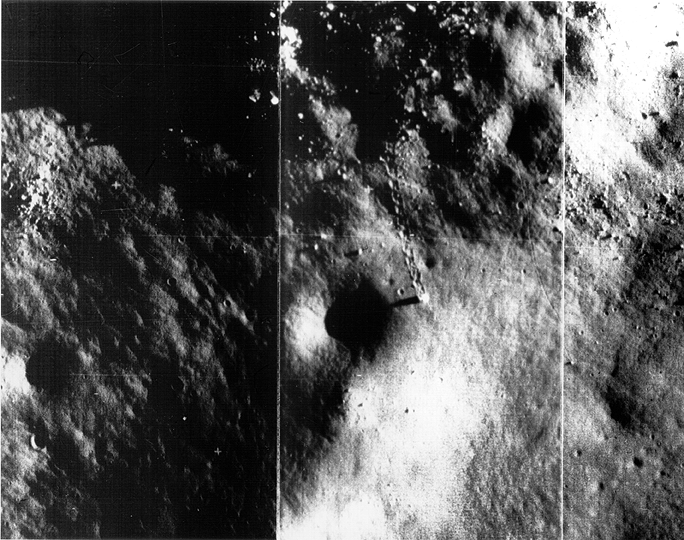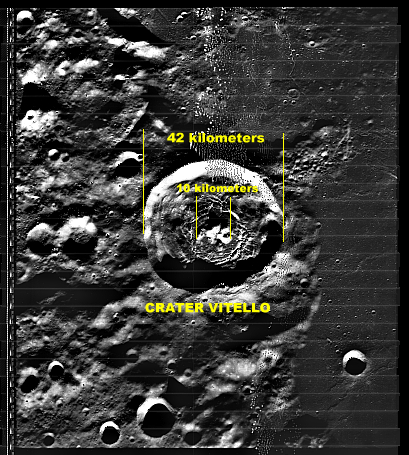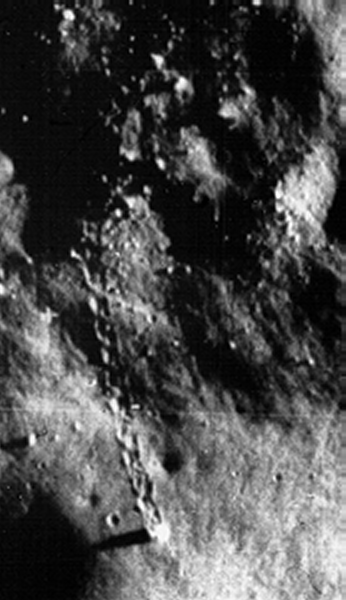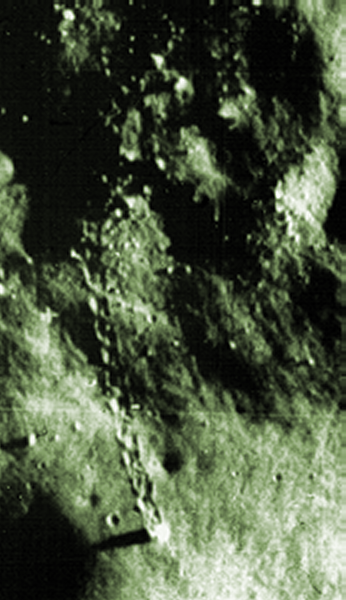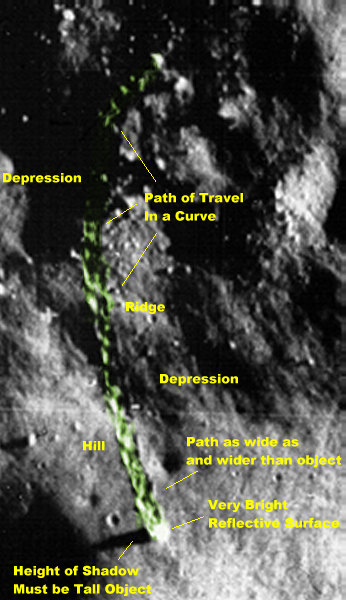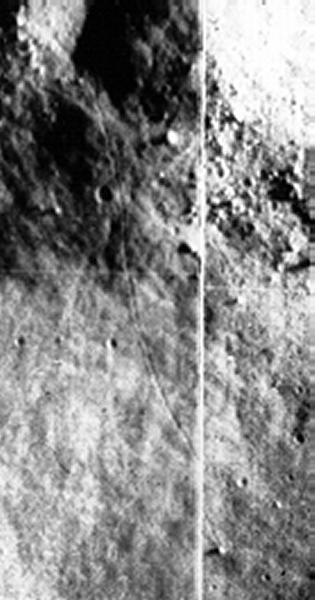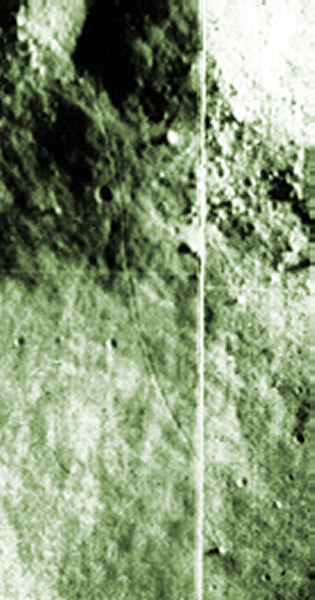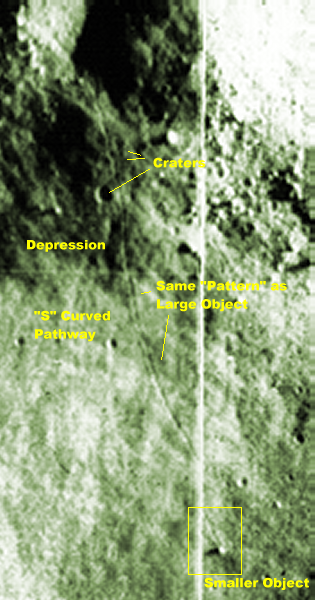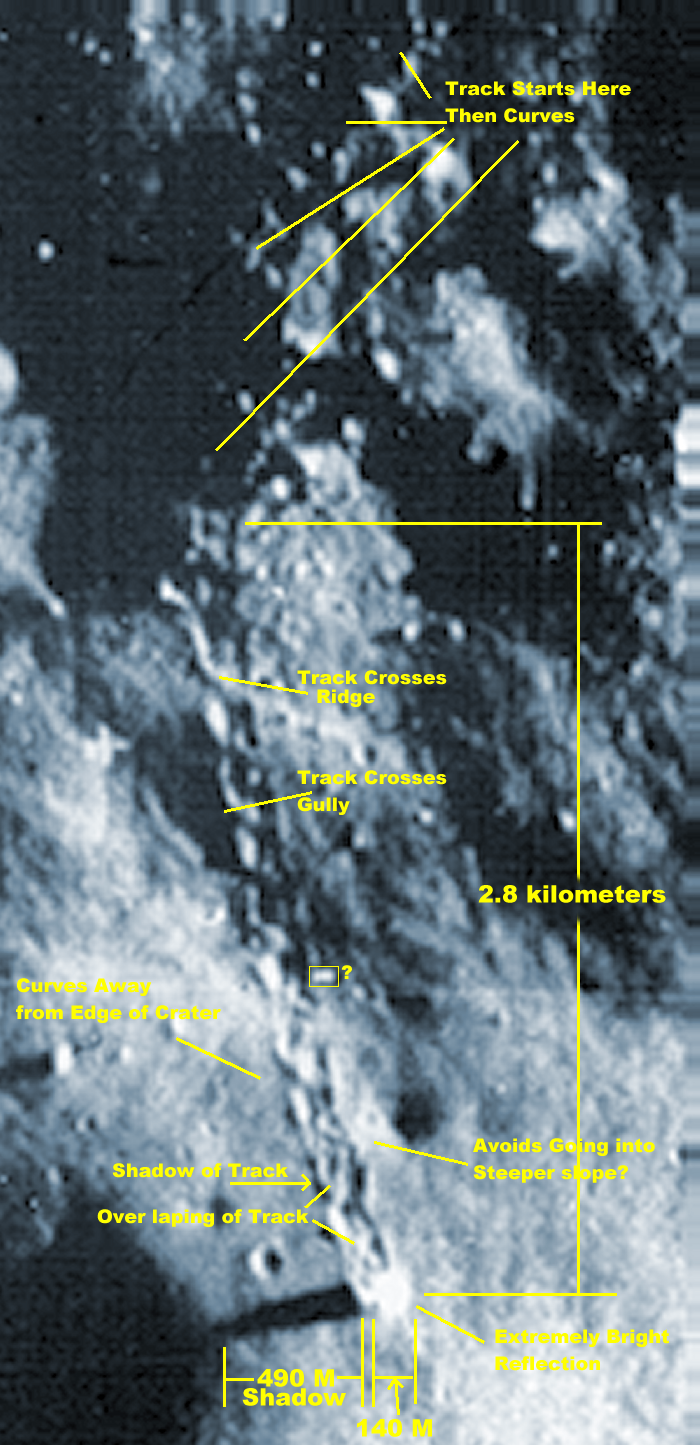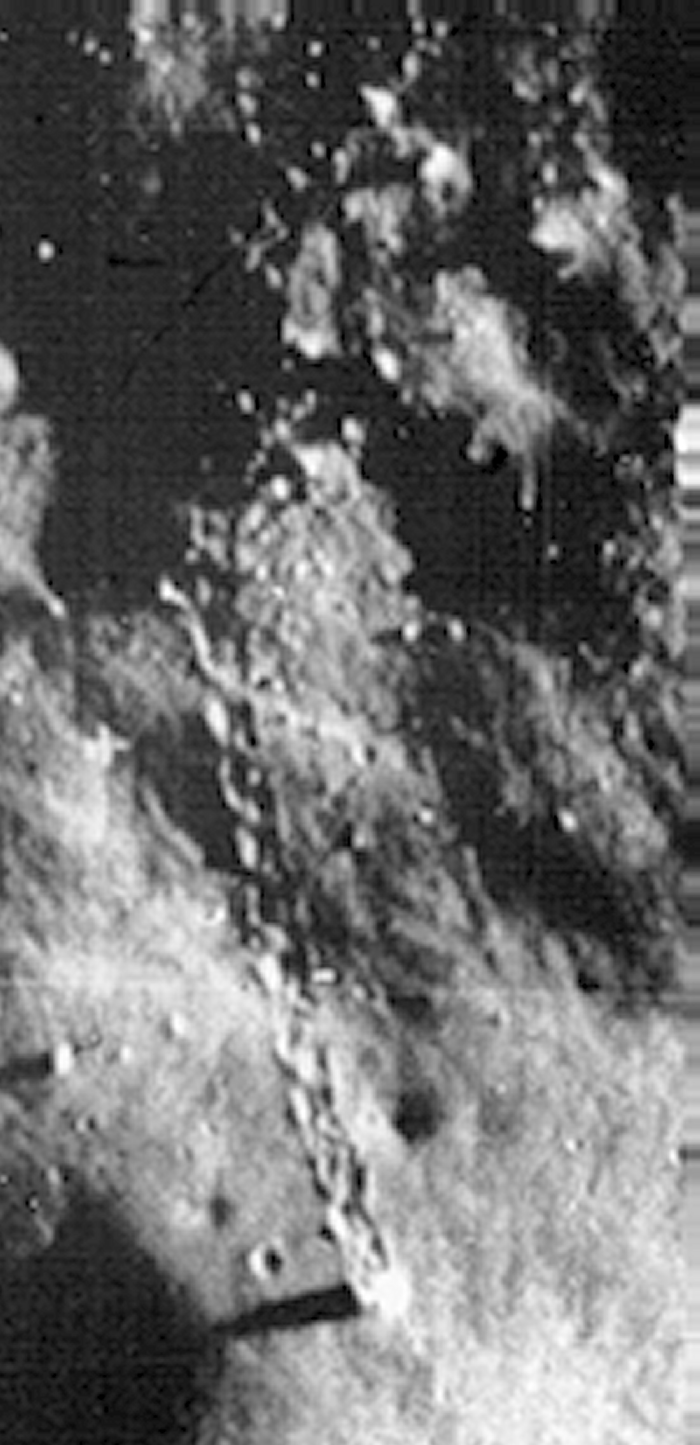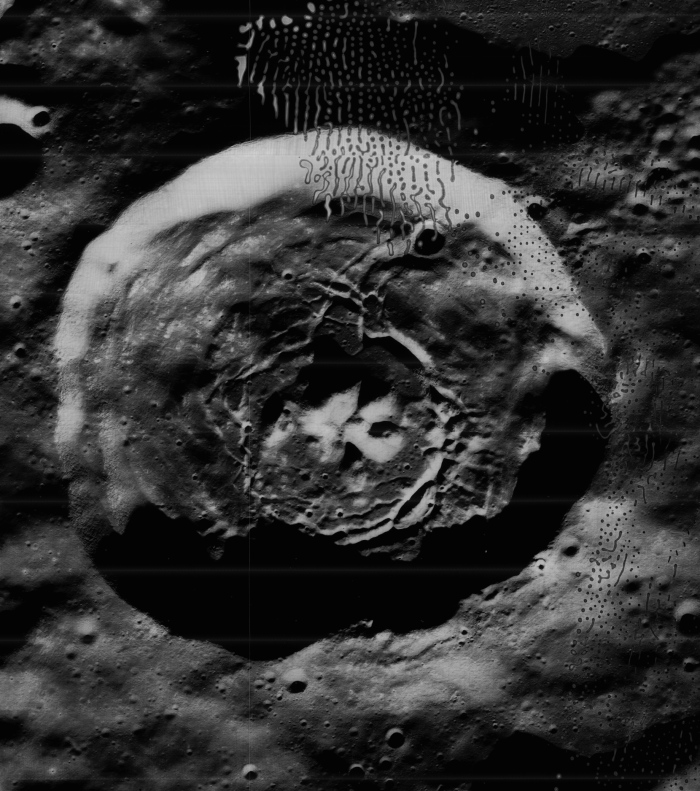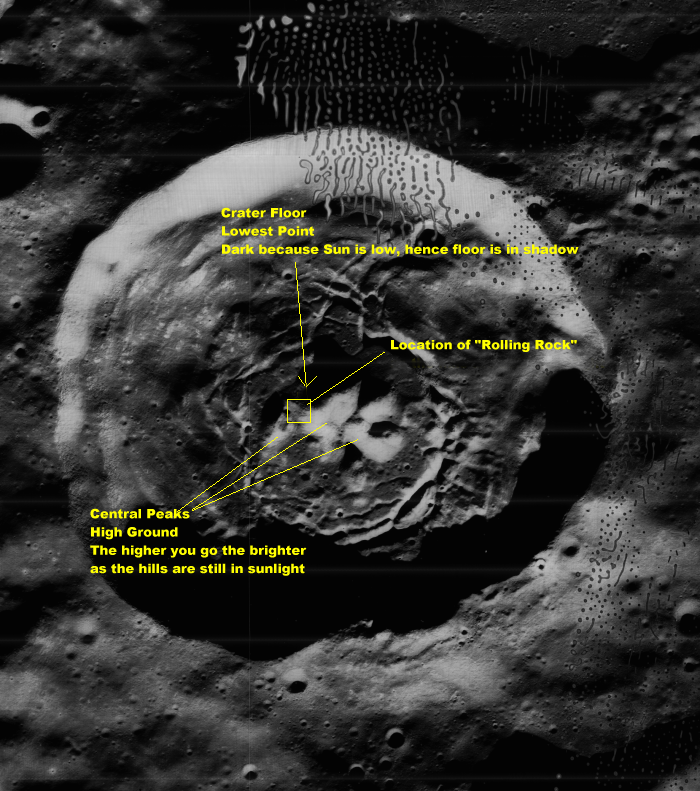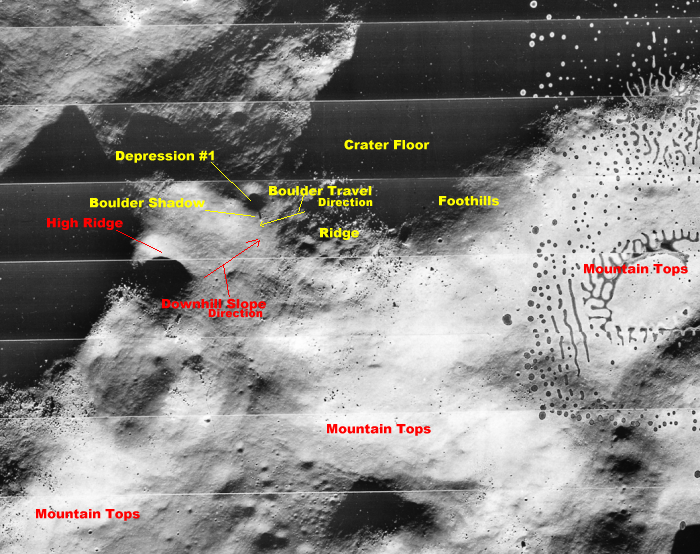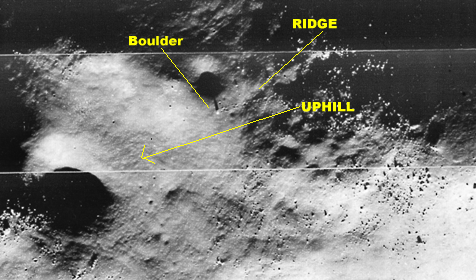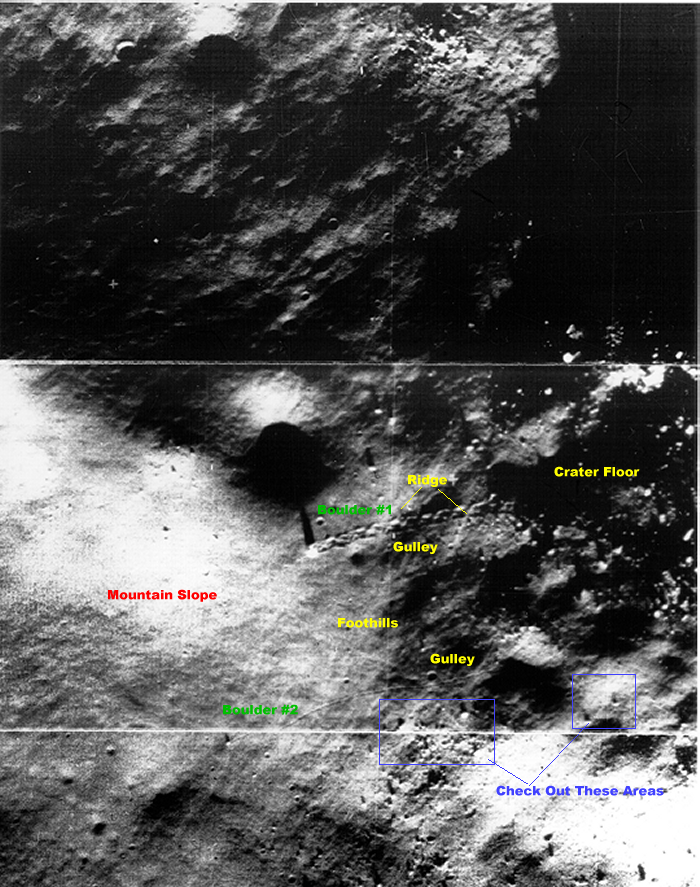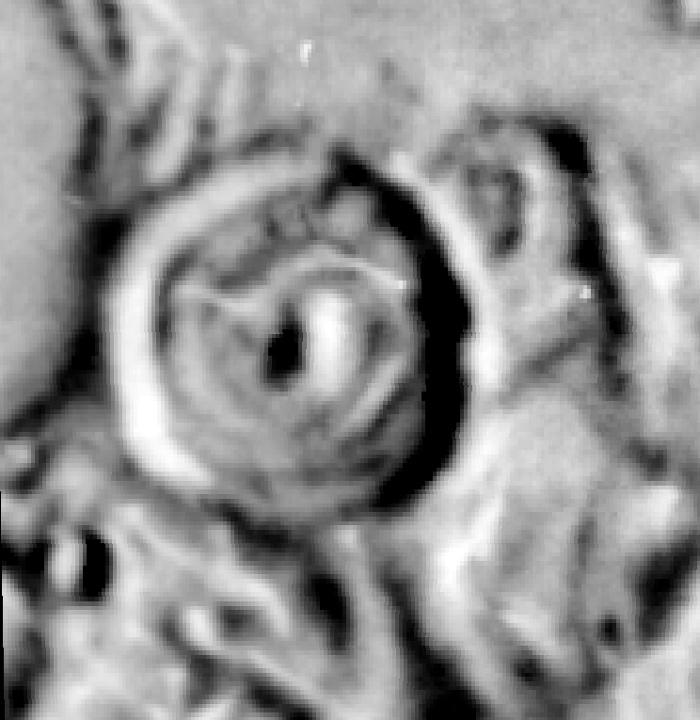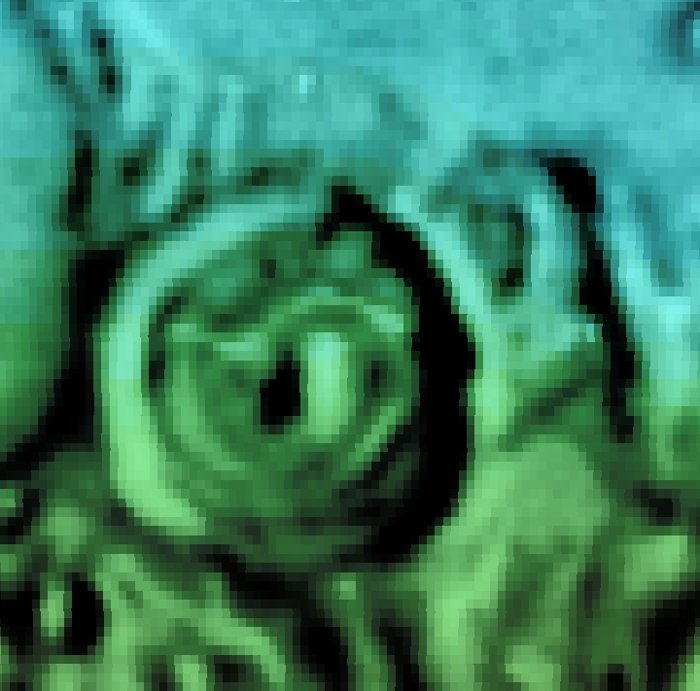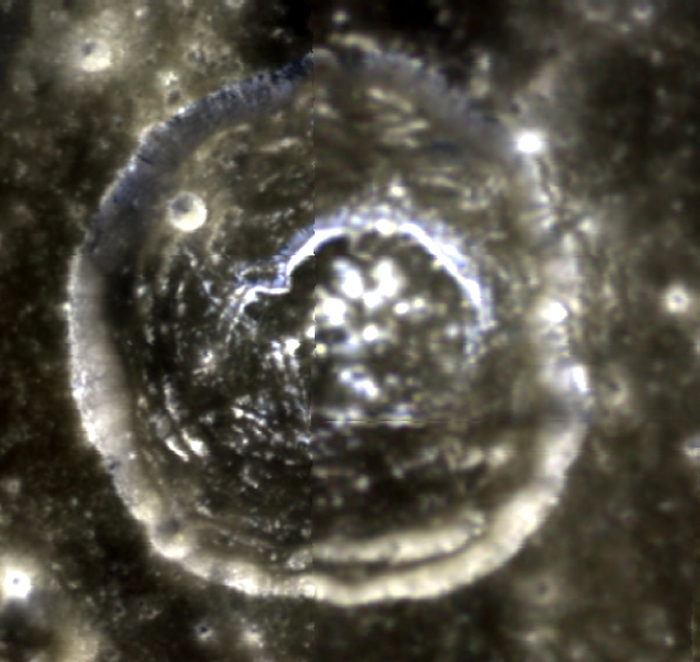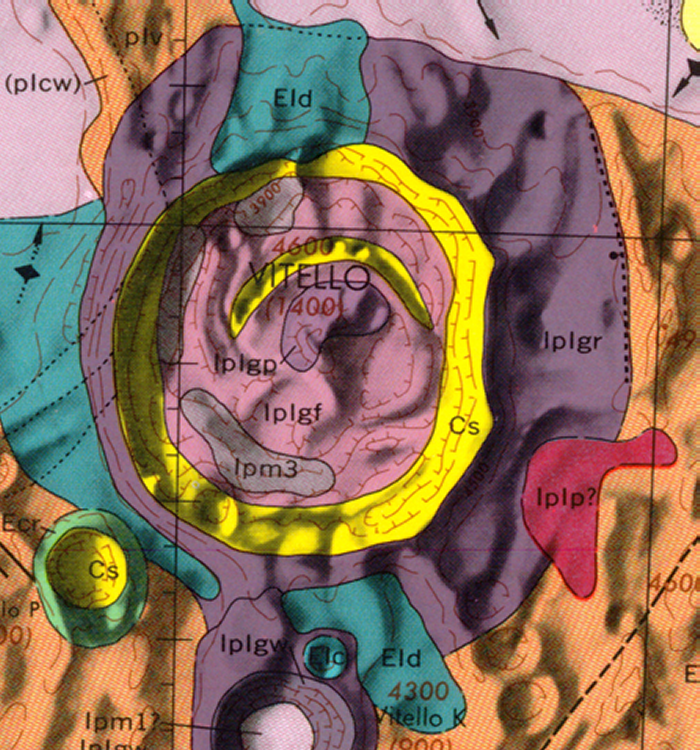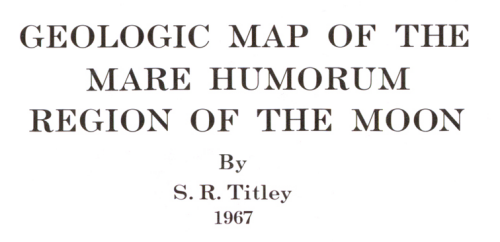|
The Enigmas on the Moon |
|||||
|
Lunar Orbiter V .
The Story According to NASA Lunar Orbiter 5, Frame 168-H2 Down slope boulder trail and boulder on the Moon Lunar Orbiter 5 image of a boulder (just right of center) which has rolled and slid down a slope and left a trail on the Moon's surface. This is within the crater Vitello, and demonstrates the small role that such processes, called gravity wasting, have on the lunar surface. The main source of surface modification on the Moon is meteorite and micro meteorite bombardment. North is up. Location & Time Information
NSSDC
Image Catalog
LUNAR ORBITER REVIVED: VERY HIGH RESOLUTION VIEWS OF THE MOON
"Lunar Orbiter 5 recorded this evidence of objects moving on the Moon on the slope of the central peak of Vitello. In the upper half of this greatly enlarged tiny portion of the original frame, we see two 'boulders' which have rolled down the mountain from the left to right. The larger one, just above the small dark crater, is about 75 feet across and sufficiently irregular to have left a conspicuous tread marked path some 900 feet long. It shines brightly and casts a long shadow into the crater. Near the upper border a 15 foot object with a triangular shadow has left a weaving 1200 foot long trail. George Leonard claimed that the upper object rolled up and out of the crater before rolling downhill to where it is seen in the photo. (NASA, VII Gassendi S 2.4)" David Hatcher Childress
|
|||||
|
.
UFO Evidence Forums UFO Believer 5/21/2005 7:02:05 PM Alien Machine Caught On Moon In 1967. On August 17, 1967, satellite Orbiter 5 took the following image of the moon. It shows an object that has left a definite “track” in the lunar surface. NASA said it was a rock that rolled downhill and left the track in the lunar surface. But there are some serious flaws with that explanation. http://nssdc.gsfc.nasa.gov/imgcat/hires/lo5_h168_2.gif 1) Looking at the “track” it left behind, the object is the same width as the track. Rolling rocks leave imprints that are narrower than their width. If it was something rolling, it must have had a cylindrical shape rather than a ball. 2) If you look at the “track”, the object went straight through a depressed part of the terrain without altering course or simply getting stuck in the depression. Then it went uphill out of the depression and continued in a smooth, undisrupted path. 3) How does a rolling rock leave such a complex pattern seen in its “track”? If it was a rock that's round enough to roll that distance, then what kind of “tread pattern” could a rock possibly have to leave such a pronounced “track” that is the same width as the rock itself? They knew about the alien activity on the moon way back
then .
UFO Evidence Forums UFO Believer 5/22/2005 4:22:22 PM Besides the leaving a track as wide as the object itself, there's an even bigger problem with thinking that thing was any sort of probe. According to NASA, satellite images of the Apollo lunar landers don't exist because the landing modules are too small to be seen by satellite. They say the modules would have to be many times larger to even be seen. If that is true, then let's say that thing in the image is as big as a good size house (even that would be much smaller that what's seen in the image). 1) Why would the US or Russia send such an ENORMOUS probe to the moon? What's the logic behind such an idea? 2) How big was the rocket that sent a bigger-than-a-house probe to the moon? 3) If such a monumental effort of sending such a probe actually happened, why didn't they just say so? Why say it was a rock? Why not take credit for such a technological achievement? Personally, I think it was an enormous mining or excavation
equipment. And that track it left was not just a track but also the result
of whatever the equipment was doing.
UFO Evidence Forums ayin 5/24/2005 4:21:33 AM Personally, I think the we did have people on the moon
during the lunar missions, but they didn't show us the real footage. There
was something shocking enough to fake it.
If you look closely on the image, you'll see that the track of the object takes a slight turn, not to get too close to the crater. UFO Evidence Forums UFO Believer 5/24/2005 8:21:39 AM Good point about the turning to miss the crater. I'm sure a rolling rock wouldn't think about doing anything like that.
The comments above missed a few interesting things about the trail of the object and the object itself. First the trail starts in the shadows {depression} near the top and it curves through several changes in altitude. Also the reflection of sunlight from the object is bright and intense, giving a slight asterism effect. But most important is the shadow! As mentioned in the comments above, this object based on the scale of the image, must be huge. But look at the shadow. This object must be very tall as well. The sunlight is at a low angle, to be sure, but compared to other objects in the area this one is very tall. |
|||||
|
.
There is a second object in the same photo to the right. This one is much smaller, but the track is similar in pattern, it also changes direction, goes into depressions, climbs out of depressions and goes over hills. It makes an "S" shaped path that avoids craters.
|
|||||
|
Update with Dimensions .
What we need to observe here is the fact that the "track" is RAISED and in scalloped swoops that leave an obvious shadow and the swoops cross each other. Add to that the facts that the track curves, crosses an obvious ridge, goes through a depression and manages to avoid "rolling" into two craters. Though it is in the dark depression at the top, stepping back from the image you can see that the trail starts near the top of this section and curves out into the light. The surface of the object is reflecting sunlight brighter than anything around, its so bright as to void any detail and even give an asterisk effect. The shadow that it casts is long, almost half a kilometer. Comparing it to the other objects nearby for length this object must be very tall. Without the exact angle of the sun, there is no way to tell, but the width of the object is approximately 140 meters across. This is based on the given width of 42 kilometers from Vitello Crater and the white anomaly in the bottom is 10 kilometers wide. The rest was calculated by pixel measurement and is fairly accurate. Over the past few months we have attempted to show you some serious anomalies on the Moon and that NASA is not quite honest about what's going on. What amazes me from people on ATS particularly is that in the face of such an obvious anomaly, people are willing to almost completely ignore it. NASA says its a moving rock. Look at this closely... look at the track that it digs up... thing about the size and distance it travels... And yet most people calmly accept NASA's explanation that this is a rock, though they never once offer any explanation of how a house size rock can wander across hill and dale, scouring out deep scallops in the landscape. |
|||||
|
|||||
|
Vitello - A Strange Crater on the Moon . Amateur astronomer and member of the Sydney City Skywatchers Harry Roberts does exquisitely detailed drawings of the moon. Here (above) is his drawing and description of a crater named Vitello: Vitello’s most eye catching feature is a near circular bright rille that encloses the brilliant chain of central peaks. I have oriented the sketch to give an astronauts eye view into the crater from overhead. Vitello has the looks of a crater three times its size, but in fact is only 42 km across. The bright rille arises at a small crater or vent just inside the northern rim, and after meandering south for 10 km sweeps around the crater floor in a near perfect curve to terminate near the central peaks. - Source: Sydney Observatory Comments:
|
|||||
|
.
The above photo is a clip from vhr_5168_med_raw.tiff,
a 12 megabyte file. There has been a lot of controversy over the direction
of travel of the supposed "rolling rocks" so we will attempt to clear this
up... The image below is the first step... locating the area in question
within the crater.
Below is a zoom in on the little yellow box in the
above image.
Statement 1
This bears up to the manufacture's description of available resolution... Statement 2
Statement 3
Statement 4
So a 1 meter/pixel was the resolution taken, but we will only get access to 60 meters/pixel and only be able to see 20% of the images... From only LO III and LO V, not LO I, LO II or LO IV. Wonder who decides which ones we can look at? Oh and they will ALL be "Cosmetically Enhanced" |
|||||
|
Clementine Images .
Here is a quote from the company that made the orbiter cameras... "On a typical Lunar Orbiter mission, the photographic system provided high-resolution pictures of 4,000 square miles of the Moon's surface with enough clarity to show objects the size of a card table." Lunar Orbiter - ITT on Lunar Orbiter Missions Paved Way for Moon Landing So once again it looks like Lunar Orbiter pictures are the best we are going to get for now
|
|||||
|
.
One last piece of evidence in the "Rolling Rock" mystery. Newton's First Law of Motion. "Every object persists in its state of rest or uniform motion in a straight line unless it is compelled to change that state by forces impressed on it." The "Wandering Boulders" appear to move in spurts judging by the track pattern. There are also smaller rocks near the large moving one that do not move. This begs the question:
Lunar Gravity: Official Version: On the moon gravity is comparatively weak. Lunar Surface gravity at the equator is 5.32 ft/sec2 (1.622 m/sec2), compared to 32.174 ft/sec2 (9.806 m/sec2) of Earth. That's 16.5% or nearly exactly 1/6 Earth's gravity. - Source Gravity Anomaly: The Lunar gravity field is uneven due to mascons (mass concentrations) near the surface. These are large, positive gravity anomalies which were detected when NASA scientists discovered that doppler radar signals from the Lunar Orbiter satellite varied as the satellite moved over different parts of the moon. The largest gravity field disturbances are in northern hemisphere at Mare Serenitatis and Mare Imbrium (mascons are usually associated with mare terrain). Mascons are yet to be satisfactorily explained. - Source NASA Seeks Undergrads to Experiment in Lunar and Zero Gravity Un-official Version:
|
|||||
|
.
|
|||||
|
at Above Top Secret Discussion Forum |
|||||
|
|
|||||
| Copyright Notice
All clipped images and enhancements on these
pages are copyright ©2006 Land of Legends. All text related
to the clips and enhancements unless otherwise noted is are copyright ©2006
Land of Legends.
All other pictures and photos on this page, unless otherwise noted, have been gathered from public domain sources or are available under GNU License. Further documentation is available on our Copyright Page and our Legal Department. Article Quotes all have links to their appropriate source and are noted. All information quoted or referred to on this page is used only for non profit educational purposes. All reasonable attempts have been made that no credits are missed, but with a work of this size omissions may occur. If you see anything of yours that has not been properly credited or wish to have removed please contact the Webmaster |
